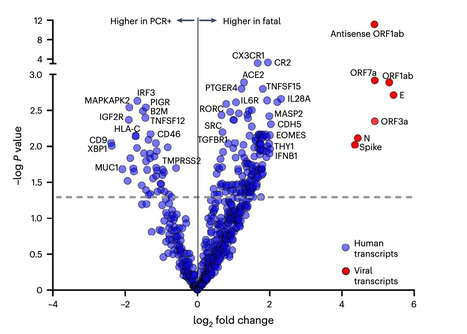New infections of inoculated residents are occurring, signaling the need to maintain safety measures, C.D.C. studies show. An unvaccinated health care worker set off a Covid-19 outbreak at a nursing home in Kentucky where the vast majority of residents had been vaccinated, leading to dozens of infections, including 22 cases among residents and employees who were already fully vaccinated, a new study reported Wednesday. Most of those who were infected with the coronavirus despite being vaccinated did not develop symptoms or require hospitalization, but one vaccinated individual, who was a resident of the nursing home, died, according to the study released by the Centers for Disease Control and Prevention. Altogether, 26 facility residents were infected, including 18 who had been vaccinated, and 20 health care personnel were infected, including four who had been vaccinated. Two unvaccinated residents also died. The report underscores the importance of vaccinating both nursing home residents and health care workers who go in and out of the sites, the authors said. While 90 percent of the 83 residents at the Kentucky nursing home had been vaccinated, only half of the 116 employees had been vaccinated when the outbreak was identified in March of this year.
The study, released in tandem with one involving Chicago nursing homes, underscored the importance of maintaining measures like use of protective gear, infection control protocols and routine testing, no matter the level of vaccination rates. The rise of virus variants also has increased concerns. Resistance to vaccines has been steep among nursing home staffs nationwide, and the low acceptance rates of vaccination increase the likelihood of outbreaks in facilities, according to the authors, a team of investigators from the C.D.C. and Kentucky’s public health department. “To protect skilled nursing facility residents, it is imperative that health care providers, as well as skilled nursing facility residents, be vaccinated,” the authors of the Kentucky study wrote. The outbreak involved a variant of the virus that has multiple mutations in the spike protein, of the kind that make the vaccines less effective. Vaccinated residents and health care workers at the Kentucky facility were less likely to be infected than those who had not been vaccinated, and they were far less likely to develop symptoms. The study estimated that the vaccine, identified as Pfizer-BioNTech, showed effectiveness of 66 percent for residents and 75.9 percent for employees, and were 86 percent to 87 percent effective at protecting against symptomatic disease. In the Kentucky outbreak, the virus variant is not on the C.D.C.’s list of those considered variants of concern or interest. But, the study authors note, the variant does have several mutations of importance: D614G, which demonstrates evidence of increased transmissibility; E484K in the receptor-binding domain of the spike protein, which is also seen in B.1.351, the variant first recognized in South Africa, and P.1. of Brazil; and W152L, which might reduce effectiveness of neutralizing antibodies.
In Chicago, meanwhile, routine screening of nursing home residents and staff members identified 627 coronavirus infections in 78 skilled nursing facilities in the city in February, but only 22 were found in individuals who were already fully vaccinated. Two-thirds of the cases in the vaccinated individuals were asymptomatic, the report found, but two residents were hospitalized, and one died. The authors of the Chicago study said their findings demonstrate that nursing homes should continue to follow recommended infection control practices, such as isolation and quarantine, use of personal protective equipment and doing routine testing, regardless of vaccination status. They also emphasized the importance of “maintaining high vaccination coverage among residents and staff members” in order to “reduce opportunities for transmission within facilities and exposure among persons who might not have achieved protective immunity after vaccination.”
Original findings Published in MMWR (April 21, 2021)



 Your new post is loading...
Your new post is loading...










